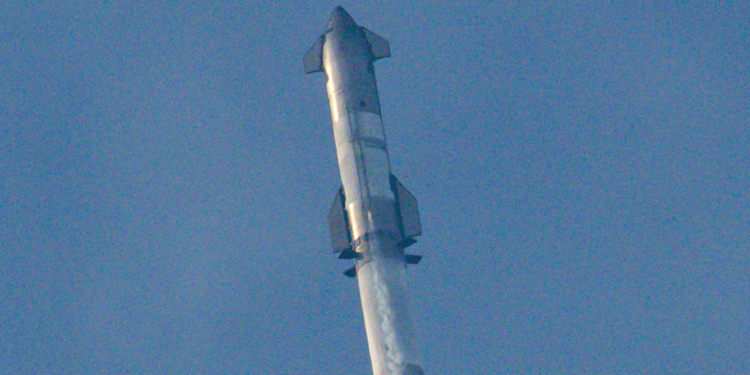SpaceX’s Starship accomplished a couple big goals when it took off Thursday morning, but was lost as it returned to earth.
The flight was touted as means to “demonstrate new technologies and techniques that will be crucial on future missions to the moon and beyond,” NBC News reported.
Thursday’s flight was held on the 22nd anniversary of SpaceX’s founding and was deemed the rocket’s third and most ambitious such test, according to the company.
The rocket launched with no difficulty at 9:25 a.m. ET from SpaceX’s Starbase test site in Boca Chica, Texas.
This time, SpaceX achieved two major milestones over previous Starship tests. The spacecraft successfully reached orbit, then re-entered Earth’s atmosphere for the first time more than 40 minutes later, per the outlet.
“This is the furthest and fastest that Starship has ever flown,” SpaceX officials said during their live broadcast of the event.
However, the spacecraft was lost while it returned to Earth. It was supposed to reach the Indian Ocean.
Despite the loss, the company called it a “phenomenal day.”
“Roughly three minutes into flight, the first-stage booster, known as Super Heavy, successfully separated from the upper-stage Starship spacecraft,” NBC reported. “‘However, Super Heavy did not accomplish a final burn as it fell back to Earth, causing it to splash down ‘hard’ in the Gulf of Mexico,’ SpaceX said during its webcast.”
Other items SpaceX hoped to accomplish on this flight will be analyzed in post-flight data.
The company also said many of the objectives would help develop Starship into a fully reusable system. SpaceX’s eventual plan was to develop Starship into a fully reusable system. However, that was not part of this flight.
“Starship was selected by NASA to carry astronauts to the lunar surface in the upcoming Artemis III mission, which could launch in 2026,” NBC reported.


























 Continue with Google
Continue with Google